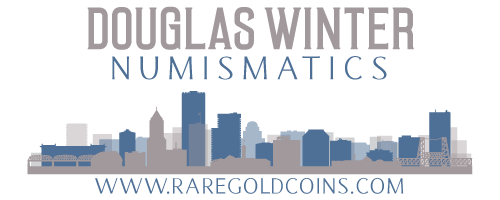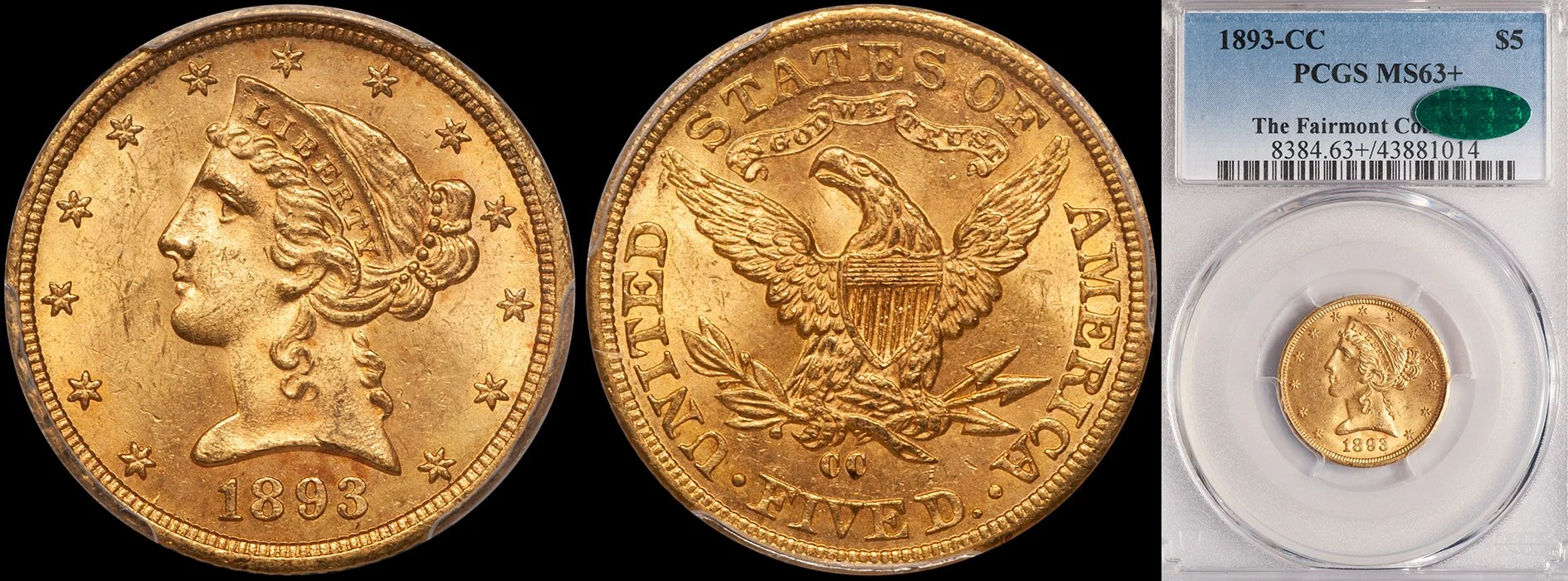Assembling a Collection of Early U.S. Gold Coins
/For many collectors, the decision to focus on early United States gold coins is an easy one. These are some of the rarest, most historic and aesthetically appealing pieces ever produced by the United States mint. Once the decision has been reached to begin a collection of these coins, how do you start? This article seeks to focus on the steps required to begin an early gold collection, offers some suggestions on how to collect these coins and charts a course to help new collectors avoid some of the common mistakes that are often made with early purchases. The term “early gold” refers to those issues struck between 1796 and 1834. There are three denominations: the quarter eagle, half eagle and eagle. Breaking these down further, the following types are known:
Quarter Eagles: Capped Bust Right (1796-1807), Capped Bust Left Large Size (1808), Capped Head Left Large Size (1821-1827), Capped Head Left Reduced Size (1829-1834). Total of four types.
Half Eagles: Capped Bust Right Small Eagle (1795-1798), Capped Bust Right Heraldic Eagle (1795-1807), Capped Bust Left (1807-1812), Capped Head Left Large Size (1813-1829), Capped Head Left Reduced Size (1829-1834). Total of five types.
Eagles: Capped Bust Right Small Eagle (1795-1797), Capped Bust Right Heraldic eagle (1797-1804). Total of two types.
In all, there are a total of eleven major types of early United States gold.
Before we discuss suggestions on ways to collect early gold, there are a few important points that I would like to address.
The first is, not surprisingly, budget. Collecting early gold is not for the collector on a shoestring numismatic budget. Just about any decent quality early gold coin is going to cost in the $7,500-12,500 range. Many of the types listed above start at around $25,000 and quickly shoot upwards. If you are not able (or comfortable) spending this sort of money, than early gold is probably not for you.
The second is quality. As someone who has looked at a lot of early gold, I can tell you that only a small percentage of surviving coins are choice and original. I think it is hugely important to assemble an early gold collection that is oriented towards coins with choice, original surfaces. This is not always going to be possible. There are certain individual rare dates that are virtually impossible to locate with original surfaces and other very expensive issues that the collector may have to compromise his standards. That said, it is my belief that an early gold collection with a small number of lovely original pieces is more inherently desirable than a large collection full of mediocrity. This is one area where CAC certification is important as CAC- approved early gold coins tend to be well above average for the grade and, in most cases, represent what I would consider to be collector quality.
One last thing to mention is the “reality factor” of your collection. As I mentioned above, collecting early gold is not for the faint of heart. These coins are expensive and if you are collecting by date or by series, once you buy the “easy” issues, you’ll have to step up to the plate for some serious wallet busters. If you are not a patient, meticulous collector you won’t have the right mindset for early gold. Even a collector with an unlimited budget is going to have to wait a few years to find a very rare issue like a 1797 Small Eagle half eagle and if the collector is picky, the wait could be three, four or even five years. Collecting early gold is not like Peace Dollars where you can race willy-nilly through a set in thirty days; even if you have an ultra-aggressive dealer helping you through the process. If the thought of working on a challenging set for ten+ years gives you the Numismatic Willies, then stop reading here!
Now that we’ve gotten the warnings out of the way, let’s look at some suggested ways to collect early gold. I’m going to make a few suggestions and list the pros and cons for each.
1. Collecting By Type: For many collectors, the best way to collect early gold is to acquire one nice example of each of the major eleven types. Clearly, the stoppers here are the 1808 Capped Bust Left quarter eagle and the 1829-1834 Capped Head Left half eagle. The former is a one-year type with an original mintage of just 2,710 and a surviving population that is estimated to be in the area of 125-150 coins. Compounding this situation is the fact that attractive comparatively “affordable” examples are very rare and the few that do exist do not trade frequently. The Capped Head half eagles struck from 1829 to 1834 are rare not because of low mintages but due to wholesale melting in 1834 after the weight of gold coins was reduced. All six of the half eagles that feature this design are rare and most of the coins that exist are in comparatively high grades.
The other types in this set are fairly easy to acquire. The set can, of course, be made considerably more difficult to complete if the collector is seeking very high grade coins. But most of these types are comparatively affordable in the lower Uncirculated grades and most are within the reach of collectors of average means in circulated grades.
PROS: It is exciting to think that every coin in this set is different in design. There are only eleven coins and this makes it a realistic project for many collectors. Most of the types are available in higher grades.
CONS: Type collectors may not study early gold in enough depth to become experts. Collectors will have to purchase an 1808 quarter eagle which is an issue that some experts feel is overvalued.
2. Collecting By Denomination: As mentioned above, there are just three denominations of early gold: quarter eagles, half eagles and eagle. Many collectors decide to collect a specific denomination. There are pros and cons for each. For some collectors, the quarter eagles are too small and they prefer a larger, heftier coin. For nearly all collectors, the half eagles are extremely challenging as there are a number of extremely rare and expensive coins and at least one issue (the 1822) is unlikely to become available in our lifetime. The eagle denomination is short-lived but it contains a total of fourteen distinct issues produced from 1795 to 1804.
An early gold set that specializes in a specific denomination is generally focused on quality. It can prove difficult to be consistent with grades in such a set due to the rarity of many individual coins. As an example, in an eagle set most collectors will be able to purchase a 1799 in Uncirculated. But the rare 1798/7 issues are not only very expensive in Uncirculated, they are exceedingly rare. My advice when specializing in a specific denomination is to stretch on the key issues and not to overdo it on the more common dates. In other words, buy the nicest possible 1798/7 but don’t go crazy when it comes to the 1799 or 1801.
PROS: Focusing on a specific denomination allows a collector to become very well-acquainted with an area of the market and this will allow him to become a more informed buyer of coins. Most of the early gold denominations include a number of different types so this collection will have a good deal of variety over the course of time.
CONS: Collecting by denomination can prove to be very costly due to the extreme rarity of many early gold coins.
3. Collecting by Date: Perhaps the most ambitious way to collect early gold is to choose a denomination (or denominations) and to assemble a set that includes one example of each date that was produced. Depending on the resources and ambitions of the collector, this can include prominent varieties for each year as well (such as a Pointed 6 and Knobbed 6 half eagle from 1806).
I just mentioned that resources are a key when it comes to a date collection of early gold. This is especially true for the half eagle; a denomination that includes a host of coins that will run in the six figure range. However, what is interesting about this denomination is that if the collector pretends that the impossibly rare 1822 “doesn’t exist,” this set is actually completable. It isn’t easily completable, mind you, but it can be completed by the collector with lots of money and lots of patience. The other two denominations are easier to finish. The quarter eagle denomination has some rare individual issues but nothing that is impossible. The eagle denomination could even be completed in a reasonably short period (less than a year) if the collector gets lucky and finds the two rare 1798/7 issues.
PROS: A date set is a great way to carefully assemble a well-matched set. I believe that a complete or virtually complete date collection would gain value as a set and it could be well-marketed by a dealer or an auction house.
CONS: There really aren’t any cons except if the collector gives himself an incompletable project. If you are set on completing a date run of half eagles from the 1820’s and 1830’s you need to be wealthy and patient.
4. Exotic Collecting: There are some other ways to collect early gold that are a bit more on the “exotic” side. Some suggestions include a first/year last year set, an 18th century set, a pedigree set and a best-available-coin set. Here are brief descriptions of each.
A first year/last year set has coins made in the first and last years of each denomination and/or type. As an example, a first year/last year date set for quarter eagles would have a 1796 No Stars and an 1834. This could be expanded and it could include a 1796 With Stars and an 1807 to represent the first and last issues of the Stars Obverse type of 1796-1807.
An 18th century set would, obviously, focus on those issues produced prior to 1800. It might include a number of denominations and not be limited to just quarter eagles or half eagles.
A pedigree set would focus on early gold coins with important pedigrees. It might include coins from famous early gold collections sold within the last few decades (Eliasberg, Bass, Norweb, Ed Price, etc) or it might have coins that, through plate matching, can be shown to be from famous older collections from the 1950’s and earlier.
A best-available-coin-set is a group of coins that the collector buys just because he likes them. It might feature an assortment of early gold chosen for their originality or for their outstanding coloration.
PROS: These exotic sets are fun because they are unique to a specific collector. The parameters behind assembling them are not as rigorous as for some of the more clearly defined sets described above.
CONS: Don’t make a set so exotic that you are the only person that “gets” it. Run your idea(s) by your dealer and see what they think.
Collecting early gold is one of the really great areas in American numismatics. I would love to help you assemble a great set of early gold and have lots of experience in this area. For more information please contact me via email at dwn@ont.com.










